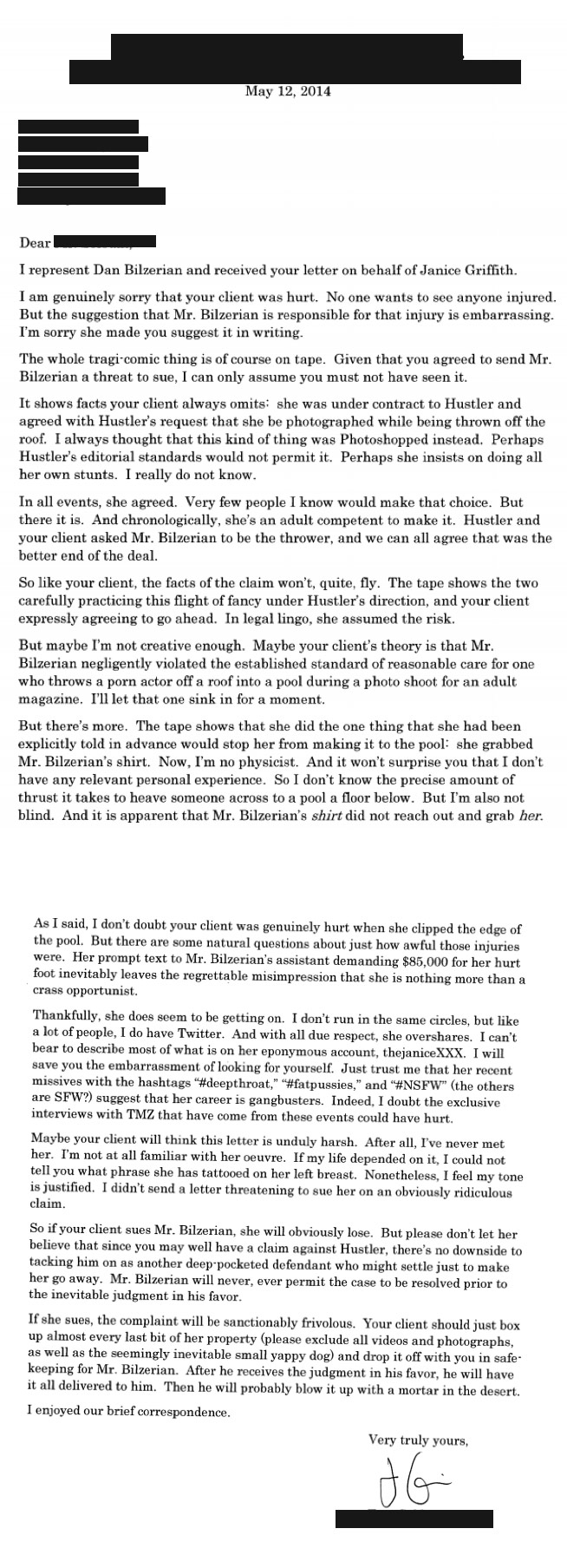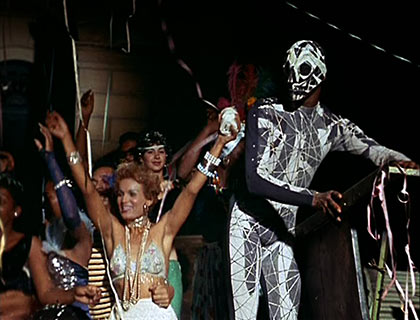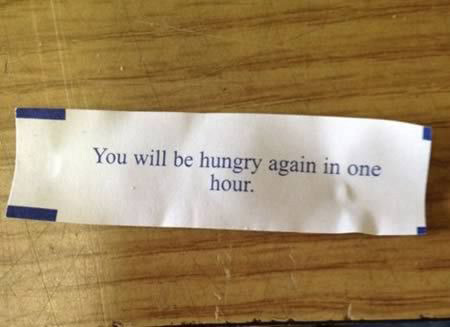pipeline

Over the past year, I’ve spent a great deal of time trolling a variety of underground stores that sell “dumps” — street slang for stolen credit card data that buyers can use to counterfeit new cards and go shopping in big-box stores for high-dollar merchandise that can be resold quickly for cash. By way of explaining this bizarro world, this post takes the reader on a tour of a rather exclusive and professional dumps shop that caters to professional thieves, high-volume buyers and organized crime gangs. […]
Like many other dumps shops, McDumpals recently began requiring potential new customers to pay a deposit (~$100) via Bitcoin before being allowed to view the goods for sale. Also typical of most card shops, this store’s home page features the latest news about new batches of stolen cards that have just been added, as well as price reductions on older batches of cards that are less reliable as instruments of fraud. […]
People often ask if I worry about shopping online. These days, I worry more about shopping in main street stores. McDumpals is just one dumps shop, and it adds many new bases each week. There are dozens of card shops just like this one in the underground (some more exclusive than others), all selling bases [batches of cards] from unique, compromised merchants.
{ Krebs on Security | Continue reading }
economics, scams and heists, spy & security, technology | June 5th, 2014 12:39 pm

Paul Ingrisano, a pirate living in Brooklyn New York, filed a trademark under “Pi Productions” for a logo which consists of this freely available version of the pi symbol π from the Wikimedia website combined with a period (full stop). The conditions of the trademark specifically state that the trademark includes a period.
The trademark was granted in January 2014 and Ingrisano has recently made trademark infringement claims against a massive range of pi-related designs on print-on-demand websites including Zazzle and Cafepress.
Surprisingly, Zazzle accepted his claim and removed thousands of clothing products using this design.
{ Jez Kemp | Continue reading }
law, scams and heists, visual design | June 1st, 2014 7:00 am

In a paper published in the journal Science, physicists reported that they were able to reliably teleport information between two quantum bits separated by three meters, or about 10 feet.
Quantum teleportation is not the “Star Trek”-style movement of people or things; rather, it involves transferring so-called quantum information — in this case what is known as the spin state of an electron — from one place to another without moving the physical matter to which the information is attached.
{ NY Times | Continue reading }
Physics, mystery and paranormal, technology | June 1st, 2014 6:12 am

Many gardeners and horticulturalists seek non-chemical methods to control populations of snails. It has frequently been reported that snails that are marked and removed from a garden are later found in the garden again. This phenomenon is often cited as evidence for a homing instinct.
We report a systematic study of the snail population in a small suburban garden, in which large numbers of snails were marked and removed over a period of about 6 months. While many returned, inferring a homing instinct from this evidence requires statistical modelling. […]
Maximum likelihood techniques infer the existence of two groups of snails in the garden: members of a larger population that show little affinity to the garden itself, and core members of a local garden population that regularly return to their home if removed. The data are strongly suggestive of a homing instinct, but also reveal that snail-throwing can work as a pest management strategy.
{ The Royal Swedish Academy of Sciences | Continue reading | LA Times }
art { Vincent van Gogh, Plain Near Auvers, 1890 }
animals, mystery and paranormal | May 20th, 2014 9:52 am
Millionaire playboy and Instagram celebrity Dan Bilzerian is best known of late for chucking a 90-pound porn star, Janice Griffith, off his mansion roof during a shoot for Hustler, and missing the pool. Griffith is now threatening to sue Bilzerian:

haha, law, porn | May 15th, 2014 2:26 pm
climate, incidents, showbiz | May 13th, 2014 7:28 am

The highest European Union court decided on Tuesday that Google must, in some cases, grant users a so-called right to be forgotten that includes the removal of links to embarrassing legal records.
{ NY Times | Continue reading }
related { Research in India suggests Google search results can influence an election | Biased search rankings alter the voting preferences of undecided voters }
images { 1 | 2. Gregory Reid }
google, law | May 13th, 2014 7:00 am

The XM-25 denies cover to the enemy in that the operator fires a laser at the target, then selects how close to that impact point he wants the shell to explode. Once he fires the weapon the 25mm shell explodes over or near where the laser was pointed, rendering most forms of cover ineffective.
{ Quora | Continue reading }
guns, technology | April 18th, 2014 5:34 am

Giving violators more punishment than they deserve can undermine the benefits of cooperative action. […] At the same time, imposing markedly less punishment than what a violator deserves creates disaffection and acrimony that also can subvert cooperation. In other words, it is not punishment that is needed to maintain social cooperation, but justice. […]
In 1848, the discovery of gold brought 300,000 men to California from all over the world. Yet this sudden mass of humanity lived without a functioning legal system. And if there had been a legal enforcement system, it was unclear what law it would enforce. […] Without a functional government, there were no licensing procedures, fees, or taxes to regulate gold prospecting. No miner worked land that he owned. Any prospector could join any mining camp at any time. Camp populations were heterogeneous: “Puritans and drunkards, clergymen and convict, honest and dishonest, rich and poor.” There was no common language, culture, or legal experience. […] The men shared a common set of needs, however. Each miner needed to be able to leave whatever he owned unguarded each day while he worked his claim. A miner who found gold needed to protect his find until he could convert it into cash or goods.
{ Paul H. Robinson/SSRN | Continue reading }
flashback, ideas, law | March 28th, 2014 7:19 am
health, kids, weirdos | March 11th, 2014 6:28 am

At Kean University, students are dying (as it were) to get into Norma Bowe’s class “Death in Perspective,” which has sometimes carried a three-year waiting list. On one one field trip to a local coroner’s office, Dr. Bowe’s students were shown three naked cadavers on metal tables. One person had died from a gunshot, the other from suicide and the third by drowning.
The last corpse appeared overweight but wasn’t; he had expanded like a water balloon. A suspect in a hit-and-run case, he had fled the scene, been chased by police, abandoned his car and jumped into the Passaic River. On the autopsy table, he looked surprised, his mouth splayed open, as if he realized he had made a mistake. As the class clustered around, a technician began to carve his torso open. Some students gagged or scurried out, unable to stand the sight or the smell.
This grim visit was just one of the excursions for Dr. Bowe’s class. Every semester, students also leave the campus in Union, New Jersey, to visit a cemetery, a maximum-security prison (to meet murderers), a hospice, a crematory and a funeral home, where they pick out caskets for themselves. The homework is also unusual: Students are required to write goodbye letters to dead loved ones and to compose their own eulogies and wills.
{ WSJ | Continue reading }
weirdos | March 7th, 2014 10:45 am

A 30,000-year-old giant virus has been revived from the frozen Siberian tundra, sparking concern that increased mining and oil drilling in rapidly warming northern latitudes could disturb dormant microbial life that could one day prove harmful to man.
The latest find, described online Monday in the Proceedings of the National Academy of Sciences, appears to belong to a new family of mega-viruses that infect only amoeba. But its revival in a laboratory stands as “a proof of principle that we could eventually resurrect active infectious viruses from different periods,” said the study’s lead author, microbiologist Jean-Michel Claverie of Aix-Marseille University in France.
{ LA Times | Continue reading }
photo { John Gutmann, I am the Magic Hand, 1937 }
health, horror | March 4th, 2014 9:35 am
crime, visual design | March 3rd, 2014 9:12 am

Ultracrepidarian (n):”Somebody who gives opinions on subjects they know nothing about.”
Groke (v): “To gaze at somebody while they’re eating in the hope that they’ll give you some of their food.” My dog constantly grokes at me longingly while I eat dinner.
{ BI | Continue reading }
Linguistics, buffoons | March 3rd, 2014 6:35 am

All you really need to do to seem clairvoyant about [Russia] is to be an utter pessimist. […]
[B]y Stalin’s very conscious design and very deliberate border drawing and population movement, most former Soviet republics are ethnic hodgepodges. So Ukraine has a sizable Russian population. Ditto Estonia, ditto Georgia, ditto Kazakhstan. And, according to Putin’s unspoken doctrine, anywhere Russian citizens are determined to be at risk, Mother Moscow can intercede with force on their behalf.
{ Julia Ioffe | Continue reading }
pipeline | March 2nd, 2014 2:30 pm
This leader came to power in democratic elections, to be sure, but then altered the system from within. For example, the leader had been a common criminal: a rapist and a thief. He found a judge who was willing to misplace documents related to his case. That judge then became the chief justice of the Supreme Court. There were no constitutional objections, subsequently, when the leader asserted ever more power for his presidency.
In power, this leader, this president, remained a thief, but now on a grand, perhaps even unsurpassed, scale. Throughout his country millions of small businessmen and businesswomen found it impossible to keep their firms afloat, thanks to the arbitrary demands of tax authorities. Their profits were taken by the state, and the autonomy that those profits might have given them were denied. Workers in the factories and mines had no means whatsoever of expression their own distress, since any attempt at a strike or even at labor organization would simply have led to their dismissal.
The country, Ukraine, was in effect an oligarchy, where much of the wealth was in the hands of people who could fit in one elevator. But even this sort of pluralism, the presence of more than one very rich person, was too much for the leader, Viktor Yanukovych. He wanted to be not only the president but the oligarch-in-chief. His son, a dentist, was suddenly one of the wealthiest men in Europe. Tens of billions of dollars simply disappeared from the state budget. Yanukovych built for himself a series of extravagant homes, perhaps the ugliest in architectural history. […]
If a leader steals so much from the people that the state goes bankrupt, then his power is diminished. Yanukovych actually faced this problem last year. […] He needed someone to finance the immediate debts of the Ukrainian state so that his regime would not fall along with it. […] the Ukrainian leader had two options. The first was to begin trade cooperation with the European Union. No doubt an association agreement with the EU would have opened the way for loans. But it also would have meant the risk of the application of the rule of law within Ukraine. The other alternative was to take money from another authoritarian regime, the great neighbor to the east, the Russian Federation.
{ NY Review of Books | Continue reading }
gross, pipeline | March 2nd, 2014 10:00 am

Today, credit cards are on supersale. Pageler says that means a big breach just happened.
Strangely, platinum credit cards on the site are selling for less money than gold cards. […]
The bots send out emails, and between 5 percent and 10 percent of recipients open the attachment, which lets the crooks in.
{ NPR | Continue reading }
economics, scams and heists, spy & security | February 21st, 2014 3:51 pm

The husband and wife team behind the handmade cosmetics company Lush – which this week won a high court battle against Amazon over its use of the word “lush” to sell rival cosmetics – has trademarked the name “Christopher North” as a brand name for a new range of toiletries, which could eventually extend to deodorants and hair removing cream. North is the managing director of Amazon.co.uk.
{ Guardian | Continue reading }
economics, law | February 19th, 2014 12:35 pm

One of them had a connection with dealers from South Jamaica — and brokered an arrangement where the New Yorkers would purchase narcotics from their California partners and then sell the drugs on consignment in the city, the sources said.
Their first transaction went smoothly, with the California trio shipping one kilo to their Queens partners, who sold the coke and promptly mailed a share of the money back to California, according to the sources.
But the New York dealers were slow sending the Californians their cut after a second transaction, the sources said.
And in their third and final deal, the South Jamaica goons not only kept all the proceeds after selling three kilos — they then tried to lure their business partners to New York City to assassinate them, according to the sources.
But only Woodard showed up on Dec. 10, 2012 […] and was murdered execution-style by a gunman in broad daylight on busy West 58th Street off Seventh Avenue.
{ NY Post | Continue reading }
drugs, guns, new york | February 10th, 2014 9:21 am
He booted up a smartphone in a Moscow café and watched as unidentified attackers immediately began to cyber-assault it.
{ Slashdot | Continue reading }
spy & security, technology | February 6th, 2014 2:38 pm




















